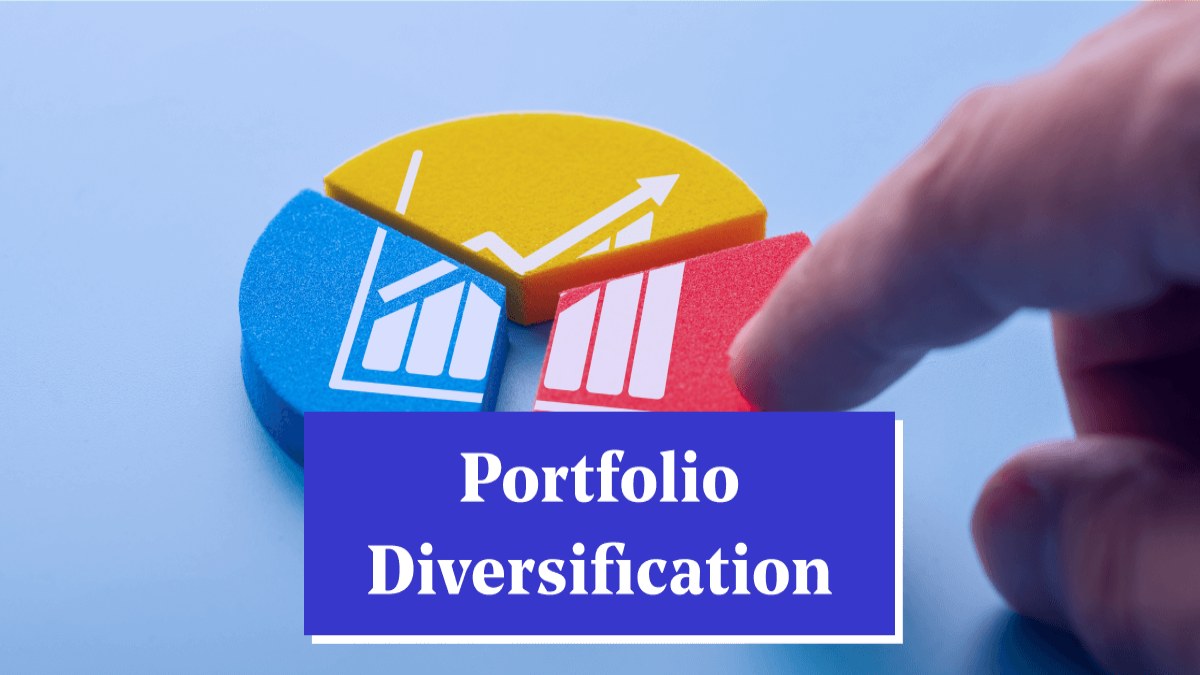Startup
What is Diversification: Important Tips to Help You Diversify Your Investment Portfolio

Investors may discover that one or two securities account for a sizable portion of their portfolio as stocks and other investments fluctuate in value over time. To increase diversification and make sure your wealth isn’t dependent on just one or two investments, it can be helpful to periodically review your portfolio.
What is diversification?
Investing in a range of asset classes and various investments within each asset class helps you manage risk in your portfolio through diversification.
Any investment plan must include diversification since nobody can predict the future with certainty, and it is a fundamental component of that understanding. There would be no need to diversify your investments if you knew what lay ahead. However, you can even out the inevitable highs and lows of investing by diversifying your portfolio, which increases the likelihood that you will adhere to your investment plan and may even yield higher returns.
Six methods of diversification to think about
Here are some important tips to remember to diversify your investment portfolio.
- It goes beyond stocks vs bonds.
Most people probably picture a mix of stocks and bonds when they think of a diversified investment portfolio. The ratio of stocks to bonds in a portfolio has been a tool used by financial advisors for managing risk and assessing diversification for decades. However, there are other ways to consider diversification.
Portfolios may eventually become excessively exposed to particular asset classes or even particular economic sectors and industries. In the late 1990s, investors who had a diverse portfolio of technology stocks were not truly diversified because the underlying companies they owned were subject to similar trends and circumstances. The Nasdaq Composite index, which primarily follows technology companies, dropped from its peak in March 2000 to its lowest point in the fall of 2002 by almost eighty percent.
Make sure to consider the sectors and industries to which your portfolio exposes you. To keep your portfolio properly diversified, think about reducing any excessive weighting in one area.
- To increase your diversification, use index funds.
A cheap and effective way to create a diversified portfolio is through index funds. By investing in mutual funds or exchange-traded funds (ETFs) that track large-cap indexes like the S&P 500, you can build a portfolio for practically no management cost. Compared to starting from scratch and keeping track of the companies and industries you are exposed to, this method is simpler.
Index funds can also be used to add exposure to particular industries or sectors that you may be underweight in if you’d prefer a more hands-on approach. These funds can be more costly than ones that follow the most well-known indexes, but they can be a fast way to increase exposure to particular industries if you’re willing to manage your portfolio a little more actively.
- Don’t overlook your finances.
Although it is sometimes disregarded, cash has some advantages when constructing a portfolio. Even though inflation will almost certainly cause cash to lose value over time, it can still be useful in case of a market selloff. Cash may help your portfolio decline less than market averages during a downturn, depending on the amount in your portfolio and other investments you hold.
Additionally, cash allows its holders to choose. This indicates that the value of having cash comes from the options it provides you with if the environment you live in today changes from that of the future. The majority of people have a tendency to focus on the investing options that are currently available to them, ignoring potential future opportunities. However, if you have cash on hand in your portfolio, you’ll be in a good position to seize any future deals on investments when the next market downturn comes.
- Target-date funds may facilitate the process.
Investing in target-date funds is another way to keep your portfolio diversified. With these funds, you can set a future date—typically retirement—as your investment goal. The fund allocates the portfolio’s weight toward safer but lower-return assets like bonds or cash as you approach your goal while investing in riskier but higher-return assets like stocks when you’re further away from it. Though you should know how the fund invests, these can be excellent for those who prefer a more “set it and forget it” strategy.
- Regular rebalancing keeps you on course.
Your portfolio’s holdings will fluctuate in size over time in response to the performance of each investment. The portfolio’s overall weight will increase for the strong performers and decrease for the poorest performers. Periodically rebalancing the portfolio to the proper weight for each investment is generally a good idea if you want to keep it diversified. Checking on things at least twice a year is a good idea, but you probably won’t need to do this more frequently than quarterly.
- Consider investing globally.
It’s simple to overlook the rest of the world when there are so many diverse investment options available in the United States. However, in an international economy, opportunities beyond national boundaries are becoming more and more alluring. If all of the assets in your portfolio are concentrated in the United States, you should consider investing in European or emerging market funds. Businesses based in nations like China may profit from their faster long-term growth than the United States.
Moreover, diversifying internationally can help you be more resilient to unfavorable circumstances that might only affect the United States. A slowdown in the US economy might not have as much of an impact on other markets. Naturally, the opposite is also true. Because of their undeveloped financial systems and economies, emerging markets occasionally encounter difficulties that impede their long-term growth trajectory. However, the goal of diversifying your portfolio is to mitigate any inevitable turbulence, regardless of its source.
Can you be over-diversified?
Diversification can be overdone, even though it’s a crucial strategy for the majority of investment portfolios. Avoid holding an overly diversified portfolio by keeping an eye out for overlapping investments, as not all investments offer the benefits of diversification to a portfolio.
You probably won’t benefit much from holding more funds if they are in the same category, such as total stock market funds or multiple small-cap stock funds. It’s similar to packing for an unpredictable trip where you bring four umbrellas when you probably only need one.
Additionally, funds of funds—that is, funds composed of multiple other funds—should be on your radar. They usually come with hefty fees and aren’t going to diversify your portfolio. Consider how various investments will interact with one another and concentrate on holding no more than one or two funds in each category. Holding uncorrelated assets, or assets that move against one another, will maximize the benefits of diversification.
Bottom line
In the end, diversification is about preparing for an uncertain future and accepting that uncertainty. A few annual portfolio reviews can help you stay on course with your long-term plan and make sure your objectives aren’t dependent on just one or two investments.
-

 Tech3 weeks ago
Tech3 weeks ago12 Essential Marketing Tools Every Small Business Owner Should Try
-

 Business4 weeks ago
Business4 weeks agoSmart Strategies to Stay One Step Ahead in a Competitive Market
-

 Business4 weeks ago
Business4 weeks ago9 Low-cost Marketing Strategies and Ideas That Offer a Good Return on Investment for Small Businesses
-

 Startup2 weeks ago
Startup2 weeks agoEssential Tips for New Retail Business Owners to Succeed in a Competitive Market
-

 Tech4 weeks ago
Tech4 weeks agoHow Small Business Can Start with Marketing Automation Software
-

 Tech1 week ago
Tech1 week agoAdobe Partner with Benny Blanco to Help Small Business Branding in ‘Create Anything’ Campaign
-

 Business3 weeks ago
Business3 weeks ago7 Essential Investment Success Tips Every Investor Should Know: How to Beat the Market
-

 Tech3 weeks ago
Tech3 weeks agoGoogle’s Change to Google Local Services Ads Could Have an Impact on Millions of Small Businesses





















